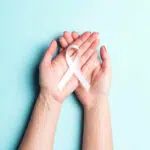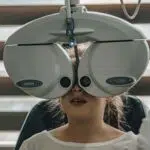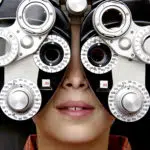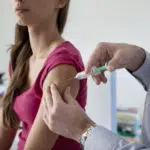With hair loss being an all too real yet less talked about issue, Hair Loss Awareness Month, observed in the month of August each year, highlights the need for us to be talking more about hair and the impact hair loss can have in our lives. It’s a misconception to think that hair loss is primarily an issue for males, as it can affect many females and children too. While men may be more susceptible to issues like male-pattern baldness and alopecia, thinning hair and alarming levels of hair fall in women and children are also causes for concern these days. There are several factors that can affect hair loss — heredity, acute stress, disease, medical treatments (like chemotherapy), strong medications, dietary restrictions, grooming and styling practices, trauma, and even pregnancy.
According to research, over 80 million Americans are affected by hair loss, and 40% of those affected are actually women. Androgenic hair loss (female or male pattern baldness) is one of the most common causes. They say that by the age of 35, most men would have experienced some form of hair loss, and with so many being affected by this issue, the American Academy of Dermatology decided to officially declare August as National Hair Loss Awareness Month. The goal of National Hair Loss Awareness Month is naturally to spread awareness about this growing cause for concern, which many people are too embarrassed to talk about still. By observing this month, those who suffer from hair loss-related issues can be educated about their condition and empowered to reach out for help to discover the potential causes and treatments which exist for them. And most importantly, it shows them that they are not alone in this.
History of Hair Loss Awareness Month
The quest to seek out cures for hair loss stems from the beginning of recorded history itself. Since time immemorial, there have been records of all sorts of weird and sometimes downright scary methods and remedies for treating hair loss. From herbal solutions, nutritional supplements, oils, and lotions to electrical shock devices, UV instruments, laser, and vacuums — both genuine and bogus solutions to hair loss continue to be touted with equal success even today. The reason for this is because hair is so intrinsically linked to appearance that people are desperate to believe in any ‘miracle cure,’ so much so, that spiritual remedies are also very highly recommended. And after seeing some of the hair-raising remedies tried out throughout the ages, we think prayer might be the safest method of all!
As early as 3000 B.C., wigs and hairpieces were invented and used to camouflage hair loss of any kind and were popular among the upper classes of many of the people living in the Fertile Crescent area of the Middle East at the time. It was during this time that medical knowledge began to be transmitted from generation to generation, and by 1553 B.C., the “Ebers Papyrus” was discovered in Luxor, Egypt — the world’s oldest complete medical text, which included the oldest known prescription for baldness. This involved mixing iron oxide, red lead, onions, alabaster, honey, and the fat of different animals and downing it after reciting an incantation to the Sun God. Centuries later, in 420 B.C., Hippocrates, known as the ‘Father of Modern Medicine,’ tried a weird concoction to treat his own baldness with no success. He then observed that eunuchs did not seem to suffer from hair loss and thus prescribed the first effective (but commercially unacceptable) surgical cure to baldness.
Since then, wigs went in and out of fashion, and scientific discoveries (along with not-so-scientific cures) advanced. Today, wigs and hairpieces remain the most effective and affordable method of covering hair loss. However, treatments such as hormone therapy and surgical grafting are also effective.
Hair Loss Awareness Month timeline
Wigs gain popularity among the upper-class Assyrians, Sumerians, Cretans, Persians, and Greeks in the Fertile Crescent of the Middle East.
In Luxor, Egypt, the world's oldest complete medical text is discovered, which includes a treatment for baldness.
Hippocrates tries different remedies for his own baldness and records the first surgical procedure for it.
King Louis XIII of France begins wearing a full wig to cover his thinning hair, and it quickly becomes a symbol of power as others follow suit.
Japanese dermatologist Dr. Shoji Okuda publishes his method for using hair transplant grafts to replace hair loss — the first published account of the modern hair transplantation technique.
Hair Loss Awareness Month FAQs
Will baldness be cured by 2020?
Currently, there’s no cure for male pattern baldness. However, medications like finasteride and minoxidil can help you keep the hair you have and, in some cases, potentially regrow some of the hair you’ve lost due to male pattern baldness. Surgical methods can also help, such as hair transplants.
At what age does hair loss start?
Hair loss, also called androgenic alopecia, can start at almost any age as you enter adulthood. You can start losing your hair as early as your late teens and early 20s. But you might have a full head of hair with almost no thinning or balding until well into your 50s and 60s. There’s a lot of variation from person to person, and it depends on various factors, which could be hereditary or environmental.
Can anything regrow hair?
It depends. “If a follicle has closed, disappeared, scarred, or not generated a new hair in years, then a new hair wouldn’t be able to grow,” Fusco says. But if the follicle is still intact, yes, it is possible to regrow the hair — or to improve the health of the existing thinner hairs.
How to Observe Hair Loss Awareness Month
Seek solutions or options
The most commonly researched and touted drugs for promoting hair regrowth are Finasteride and Minoxidil, both of which are F.D.A. approved. For women, hormone therapy is often done. As for surgical procedures, hair follicle grafting and transplants and gene therapy are also on the rise. Before any step can be decided, though, it is always recommended to seek the opinion of a professional — either a dermatologist or trichologist. And hairpieces or wigs are always a fallback option for those who do not want invasive medical treatment of any kind.
Join an event
With the entire month of August being dedicated to hair loss awareness, there will be something for everyone to participate in. And if there isn't, why not create your own way of raising awareness about hair loss. Off the top of our head, a few suggestions include awareness drives at your local school or community center, backyard hair spas for the neighborhood, collaborations with pharmacies to bust common hair-loss myths and help educate people.
Invest in your own hair care
There's no time like the present to start taking better care of the hair you do have. Products that thicken the shaft of your hair provide a fuller look, especially keratin-based ones. Washing hair using a gentle shampoo, and leave-in conditioner, is a better option. Forego heat treatments, including hot oil therapy. All it takes is a bit of research to ensure healthier hair.
5 Important Facts About Hair Growth Remedies
Greek concoctions
Hippocrates' medical formula was a mixture of opium, horseradish, pigeon droppings, beetroot, and various spices to be applied to the head.
Indian headstands
In ancient India, it was thought that standing on your head was the best way to stimulate hair growth.
Celtic superstition
In Ireland, the affected person was to stuff mice into a jar, seal it and bury it near the fire, digging it up a year later and taking care to use gloves so their fingertips wouldn't sprout hair.
American science
The Scientific American journal published an article on how listening to stringed instruments could stimulate hair growth while brass was detrimental
Chinese herbology
A Chinese tradition was to blend rosemary, safflower oil, herbs, and crushed animal testes, to massage onto the scalp.
Why Hair Loss Awareness Month is Important
It addresses an age-old issue
As we have seen, hair loss has been an issue for as long as human vanity has been around — i.e., a very long time. What is important is that the issue is now beginning to leave the shroud of shame that historically surrounded it and is being talked about more openly. This can encourage society itself to be more accepting of hair loss and empathetic to those who may be suffering from it.
It educates us
The fact that hair loss is more common than we know and that it affects both the sexes is something that needs to be brought to light. Since many people are at risk, it is important to be educated about hair care methods, hair loss prevention (if possible), and the safe options which exist for those who do not wish to go through life without a head of hair.
It redefines beauty
The spread of hair loss awareness has helped redefine beauty ideals itself, as more and more people have been empowered to show the world how bald can also be beautiful. Campaigns and beauty industries have begun celebrating baldness, and many celebrities (both male and female) have normalized baldness by showcasing their own. So whether by choice or not, people need not experience the crippling self-esteem issues or shame which used to accompany hair loss. Instead, they can be empowered to make their own choices.
Hair Loss Awareness Month dates
| Year | Date | Day |
|---|---|---|
| 2025 | August 1 | Friday |
| 2026 | August 1 | Saturday |
| 2027 | August 1 | Sunday |
| 2028 | August 1 | Tuesday |
| 2029 | August 1 | Wednesday |





































































